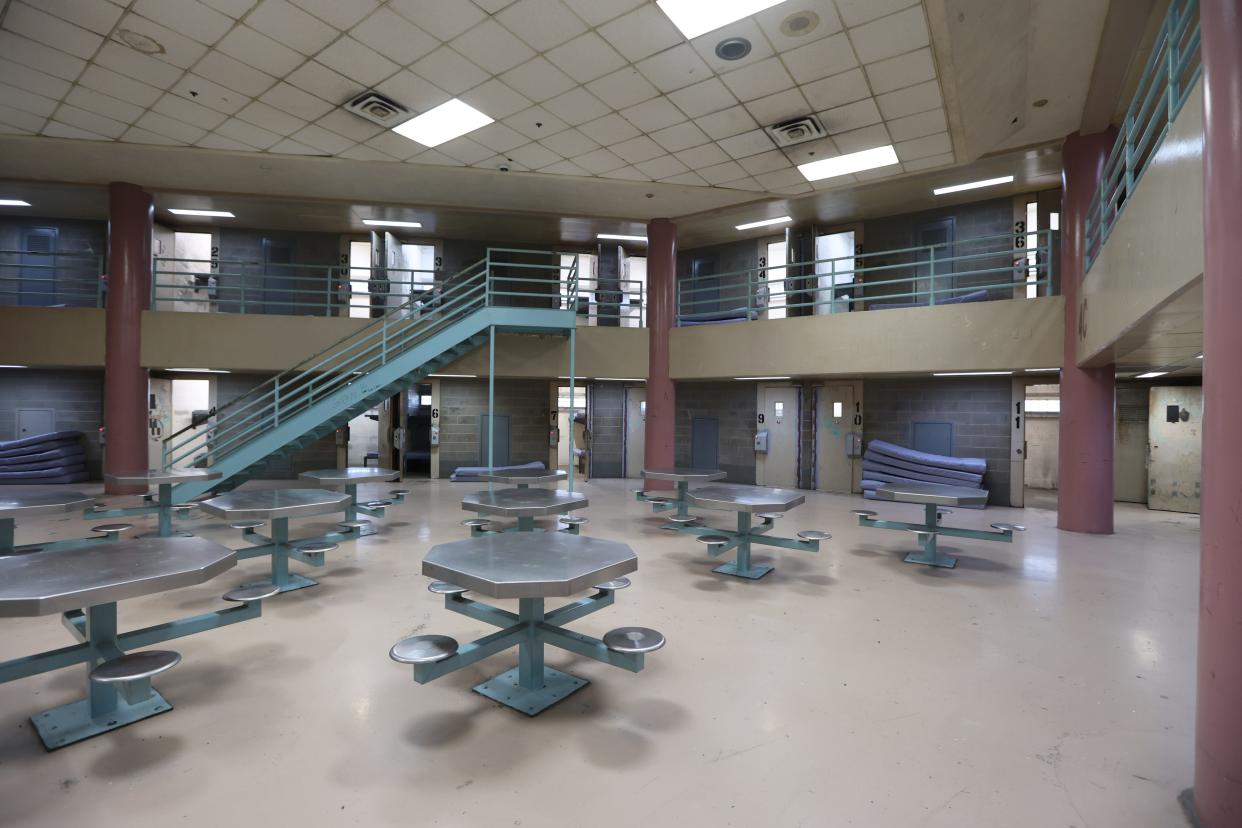Guest: The conditions were harsh; crowds were rough. Former inmate tells of OK County jail

Having just observed the 20-year mark since my release from the Oklahoma County jail — recently named “the deadliest jail in the nation” — seeing a former sheriff again triggered outrage. Not just for my sake, but the thousands of lives impacted by that man and what occurred under his watch.
And the jail just keeps stacking up scandalous headlines and investigations. I reject the notion the jail has the worst offenders in the country. The only thing different about Oklahoma County inmates is how they are treated and forced to live.
More: Broken Trust: How the Oklahoma County jail leadership failed those it sought to protect
It’s hard to grasp its totality. If a puppy mill were operating in these conditions, they’d be facing felony charges.
Most inmates are decent people who’ve messed up or suffer from addiction. Only about one-fifth of the 2,500+ in custody have violent charges.
When I was there, lockdowns for several days at a time were normal. I only got six showers in nine months. Conditions were filthy. The building, broken. It was uninhabitable in 2003. Imagine what it’s like today. It was common to see fecal matter smeared on the walls. Puddles of urine are found in holding cells without toilets. The bugs; you cannot imagine the infestation. The food is unfit for animals. I lost 70 pounds from malnourishment.
Frigid winter winds blew through my cell’s outer wall forcing me to cover myself with a thin blanket in the fetal position just to survive it. Multiple requests for heat or a transfer were denied. Often the plumbing backed up and flooded the whole cell block. Sprinkler systems would go off in cells spraying thousands of gallons of rusty water waist deep.
The conditions were harsh. The crowds were rough. The staff was horribly unprofessional.
More: CEO: Jail being reshaped with compassion, commitment to change lives for the better
Rival gangs and known enemies were housed in the same units. Riots broke out. Phones were ripped off the walls and used as weapons. Chicken bones became shivs.
People were robbed and bludgeoned for their commissary. Three to four inmates were stacked in two-person cells that were originally designed for just one inmate. Requests for medical care were routinely denied.
Visitors were disrespected by the staff and treated like they were the criminals, almost like it was a punishment for wanting to see their loved ones. It’s “as if” the staff got psyched up to go poke bears all day. When I was there, they hired boys too young to be law enforcement and others who didn’t have the temperament or necessary requirements. Craving authority to bark orders, every day they pushed people over the edge. They were punks, and they must’ve been encouraged to be that way because the behavior was consistent among them all.
Withholding food, provoking violence, name calling, outright lying, neglection, refusing simple requests and denying basic essential needs were all commonplace among the staff. They loved to fight inmates and stir up trouble. Provoking inmates at the most vulnerable stages of their lives to say and do things they normally wouldn’t do was an hourly occurrence.
That place treated Oklahomans accused of a crime exponentially worse than how we treat those convicted of a crime. You think we’re a civilized people? I say we become civilized when we put an end to this disgraceful treatment once and for all.
Working as a criminal justice consultant, I've been face to face with thousands of inmates and corrections faculty all across the country. Professionally, I’ve found no comparison to what inmates in Oklahoma County experience. It’s a modern-day Alcatraz.
The inculcated substandards inside that house of horrors require us to do almost everything opposite of what the jail has done spanning four decades. I call for a total transformation. It’s not an inmate problem. It’s an administrative problem, and it’s the infrastructure.
Mass firings, retraining others (even top brass) are musts. Comprehensive inmate evaluations and risk assessments mitigate against violence, health risks and other hazards, including injury and death. Reducing the population to allow for necessary reconstruction is essential. Providing nutritious food and improved health care are immediately needed. And an orientation, or reintroduction, must occur for those returning, and they must understand things are different before they get on the elevators.
Consequently, better living environments for inmates inadvertently create better, safer work environments.

Tony Green is also known as OK DOC#451554 and has 25 old felony convictions. Today he is a board-certified John Maxwell Team Member as a licensed coach and speaker, and a facilitator credentialed with Global Priority Solution. His expertise is in criminal justice consulting and reform activism with a mission to transform prison culture and reduce recidivism rates.
This article originally appeared on Oklahoman: Guest: Oklahoma County jail won't improve with aesthetic changes

